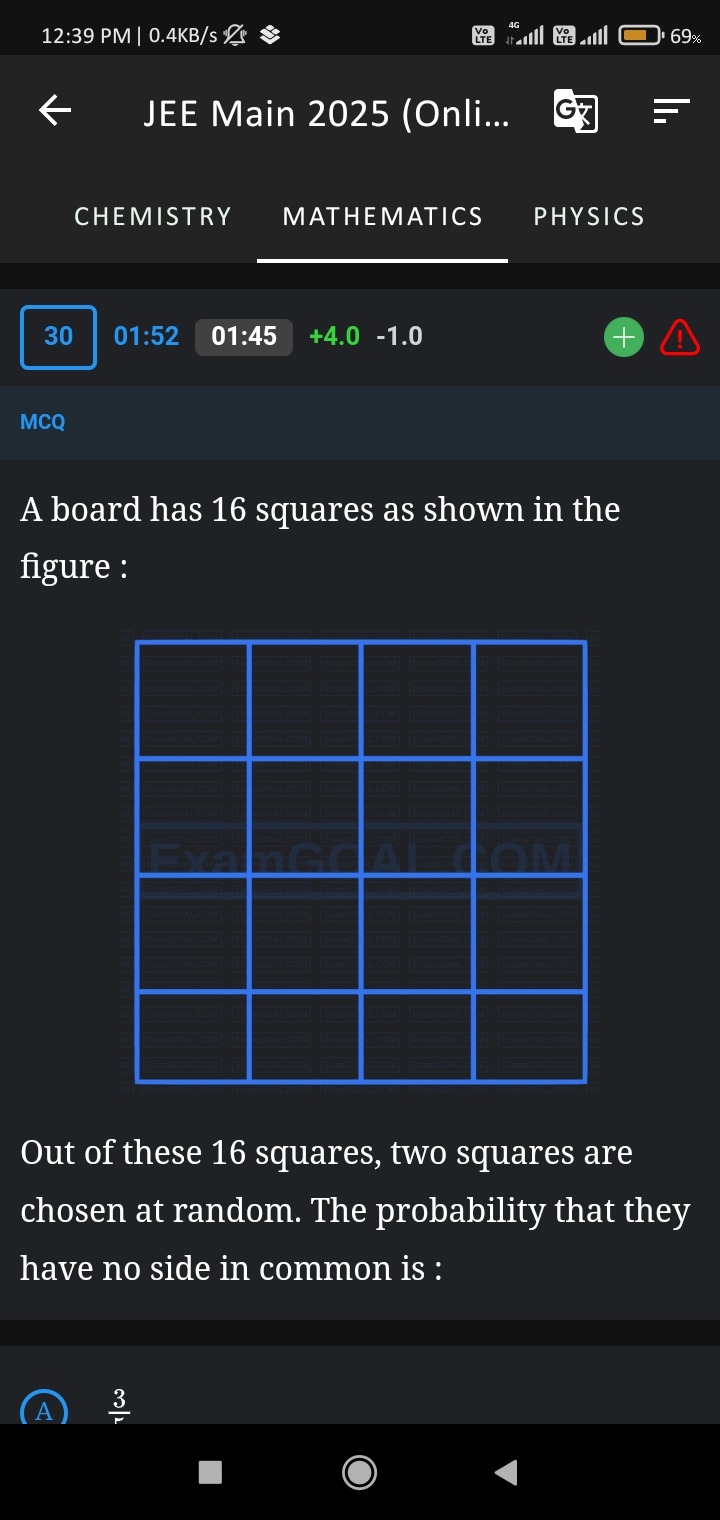Question
Question: A board has 16 squares as shown in the figure : Out of these 16 squares, two squares are chosen at ...
A board has 16 squares as shown in the figure :
Out of these 16 squares, two squares are chosen at random. The probability that they have no side in common is :

A
3
Answer
54
Explanation
Solution
Solution:
- Total pairs of squares:
- Counting adjacent pairs (sharing a common side):
- Horizontally adjacent: In each of 4 rows, there are 3 pairs.
Total = 4×3=12. - Vertically adjacent: In each of 4 columns, there are 3 pairs.
Total = 4×3=12. - Overall adjacent pairs: 12+12=24.
- Pairs with no side in common:
- Probability:
Minimal Explanation:
Total ways to select 2 squares is 120. There are 24 pairs that share a side. So, non-adjacent pairs = 120 − 24 = 96. Thus, the probability = 96/120 = 4/5.
